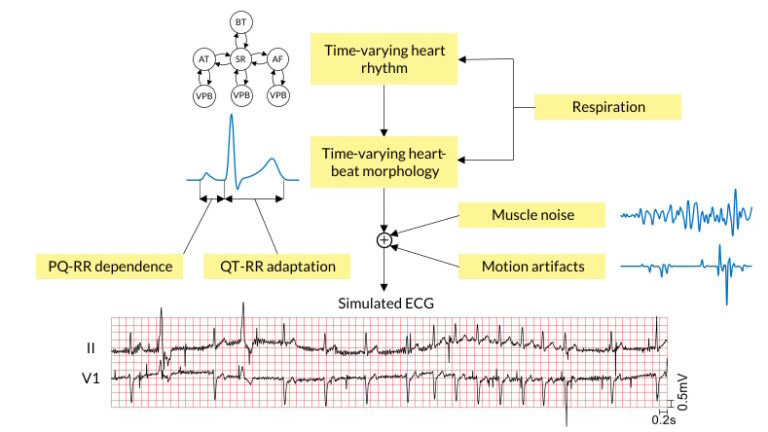ECG simulation is a useful tool for algorithm development and performance evaluation in applications including detection of arrhythmia episodes, fetal ECG separation, and detection of T wave alternans. Simulated data can be used to augment partially incomplete databases where signals with specific characteristics are absent or rare.
The present paper extends considerably an existing simulator by modeling atrial and ventricular arrhythmias of particular relevance for analysis of atrial fibrillation (AF). Switching between transient arrhythmia episodes is done through a discrete-time Markov chain. Respiration-induced changes in heart rate and beat morphology are modeled as are the relations between PQ and QT intervals and heart rate. Two novel, time-dependent noise models are proposed, based on the analysis of noise sources frequently encountered in ambulatory monitoring and exercise stress testing: muscle noise and motion artifacts. Generation of ventricular ectopic beats is effectively performed through Hermite functions, using coefficients obtained from fitting to ventricular beats extracted from a public database.
To evaluate the realism of the proposed ECG simulator, three medical doctors with experience of ECG interpretation independently assessed a dataset consisting of 100 real ECG and 100 simulated ECG, blinded to the origin of each signal. The usefulness of the simulator is illustrated by two experiments, where simulated and real ECG signals are used to train a neural network for 1) quality control, to reduce false beat detection in AF screening and 2) AF detection in the presence of other arrhythmias. The results suggest that the proposed ECG simulator can produce realistic signals useful for algorithm development.

